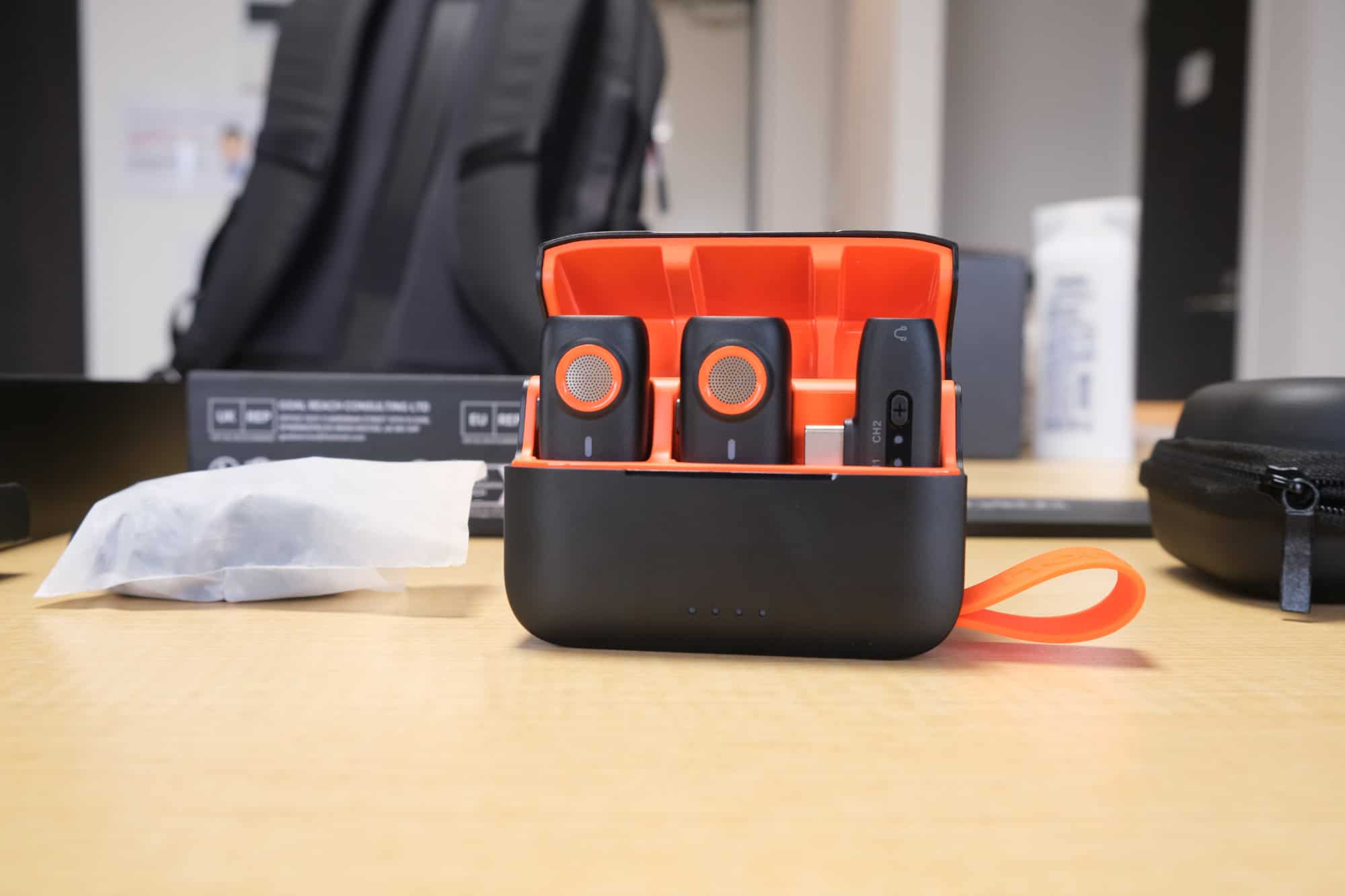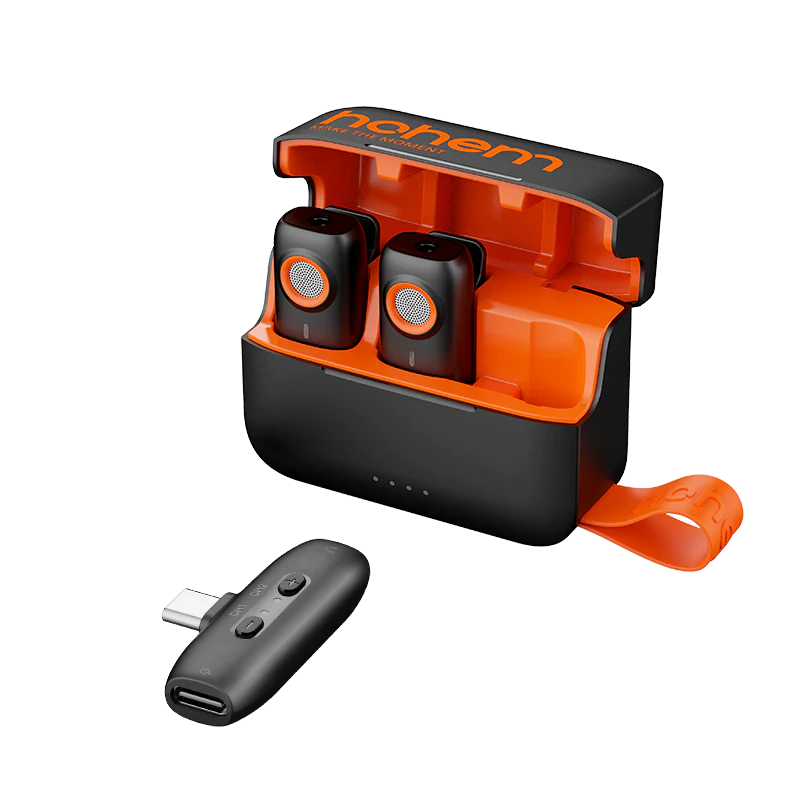The Hohem Mic-01 is the latest entry into the wireless microphone system market from Hohem. As smartphone content creators increasingly focus on producing professional quality video and audio for platforms like YouTube and TikTok, there is growing demand for affordable wireless mics that can capture great sound without cables getting in the way.
Hohem is best-known for their gimbals, but with the Mic-01 they are expanding into audio gear as well. In a competitive market that includes well-regarded options like the Rode Wireless Go II and Hollyland Lark C1, does Hohem’s debut wireless microphone measure up?
Hohem Mic-01
- Good audio quality and noise cancellation
- Useful remote shutter button
- Backup recording to microSD card
- Flexible mounting options
- 3.5mm lavalier mic inputs
- Can't see exact transmitter battery levels
- External power source required if using TRS 3.5mm receiver output instead of USB-C/Lightning
Table of Contents
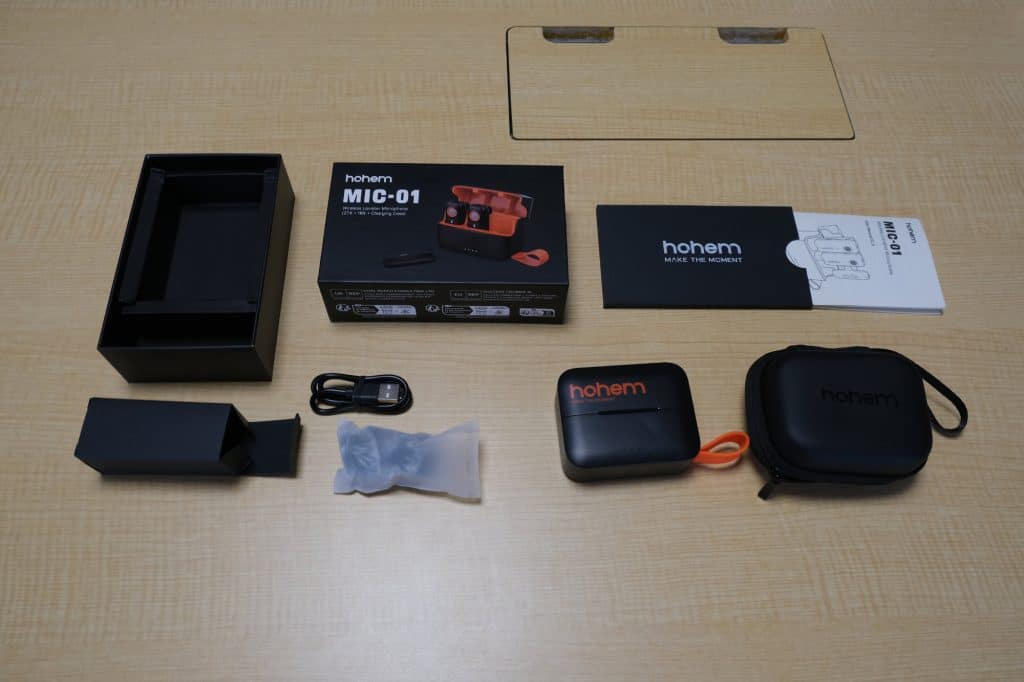
Quick Summary
If you’re a smartphone creator in the market for a wireless microphone system that plugs into your phone directly while delivering on audio quality, the Hohem Mic-01 is hard to beat.
Recordings are a significant jump up in quality from those $30-50 no-brand alternatives, and it adds several notable features over the similarly priced Hollyland Lark C1 including onboard recording, a remote shutter button, and reverb mode.
Of course, if you can deal with the need for additional adapters or cables for a connection to your phone’s USB-C/Lightning port, then there are other options to consider at this price. But personally, I can’t imagine using a bulky receiver plus a Lightning or Type-C adapter with my phone again.
On the flipside, the Mic-01’s phone-focused design also makes it difficult to recommend as a dedicated lavalier microphone system for your camera. Even though it will work, the lack of a battery in the receiver means you need a separate power source when connecting to devices using the 3.5mm TRS output.
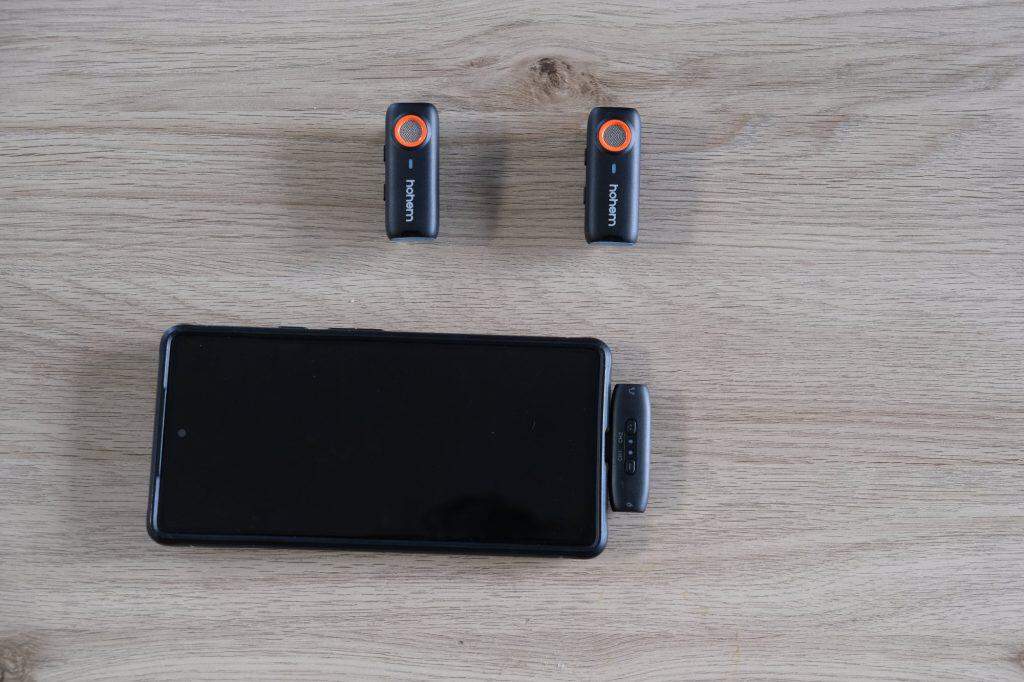
Designed with your phone in mind
Most lavalier wireless mic systems are designed with mirrorless and traditional video cameras in mind. As a result, they typically connect to recording devices via a TRS-TRS cable. You know, the cables with the good old 3.5mm jack that no longer exist on the newest phones.
That means they don’t pair very elegantly with your phone, requiring some kind of USB-C/lightning adapter in the middle to accept the TRS input, and of course the dangling cable itself.
But because of how popular mobile filmmaking is, we’re seeing USB-C and lightning connector mic systems emerge on the market. These simply attach directly to your phone for a more streamlined plug and play experience.
This is exactly what the Hohem Mic-01 is, a microphone that will easily connect to your phone. It is available in a USB-C variant (for Android and the iPhone 15 series) and Lightning connector variant (for older iPhone 14 and below). The USB-C variant can also be used as a USB microphone for many other devices, such as your computer or tablet.
Unboxing and First Impressions
Upon unboxing, the package reveals a well-thought-out ensemble: two transmitters (TX), a receiver (RX), a charging case, windscreens, a Type-C charging cable, and of course the user manual.
The charging case feels robust with a solid hinge, and sports the brand’s signature orange and black color scheme. It houses slots for both transmitters and the receiver, with magnets securing them snugly in place for charging. A rubber strap on the case is a thoughtful addition for enhanced portability.
The case can fully recharge the transmitters more than two times over, extending usage from the transmitters’ built-in 7.5-hour battery life up to a generous 20 hours. This is enough juice for even the longest continuous shoots or live streams.
A row of four LED battery indicators displays the current charge level for the 850mAh charging case battery. While the indicator system takes some memorization to decode because it doesn’t scale linearly, it reliably displays the remaining runtime. Here’s how to break the LED charging indicators:
- 4 solid LEDs – 100% battery
- 3 solid LEDs – 75% battery
- 2 solid LEDs – 35% battery
- 1 solid LED – 15% battery
- 1 flashing LED – Under 3% battery
Receiver (RX)
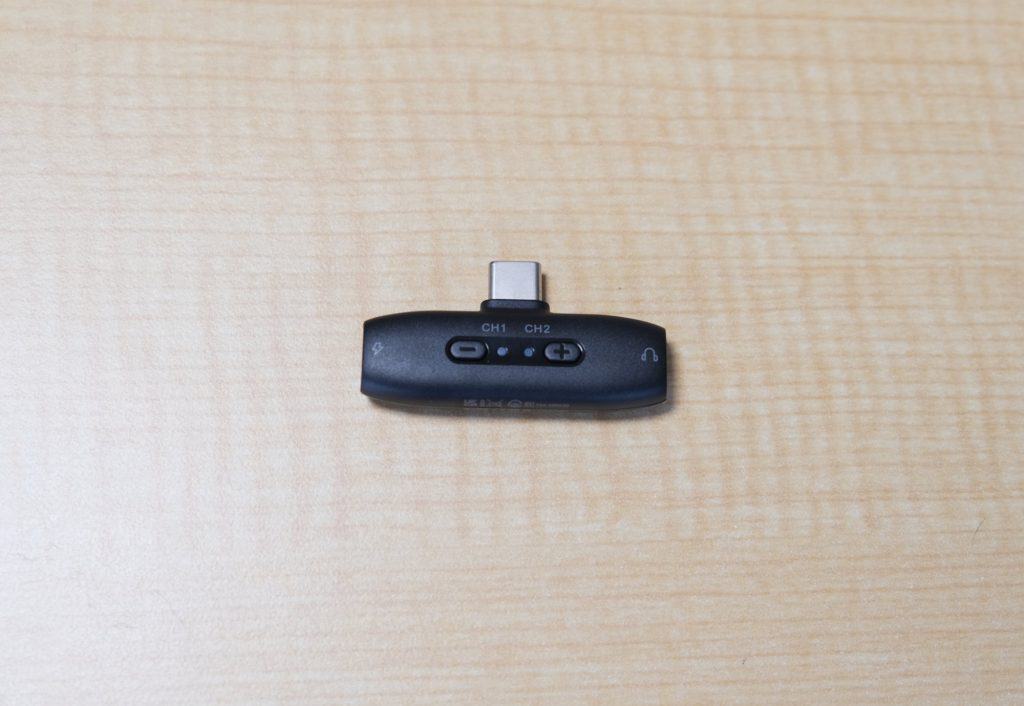
The tiny and lightweight receiver connects directly to phones and tablets using the USB-C connector, or the lightning connector depending on the version you buy. This allows for a hassle-free setup without adapters or conversion cables.
The ability to monitor recordings in real-time right from the receiver using wired earbuds/headphones is helpful for ensuring quality audio takes during shooting and recording. Rival mic systems often cheap out by not enabling direct monitoring functionality.
The same 3.5mm monitor port can be used instead to connect to DSLR/mirrorless cameras or camcorders as well, so you’re not completely limited to your phone, tablet or PC.
However, since the receiver forgoes an internal battery for charging over USB-C or Lightning connection instead, using the 3.5mm port means the receiver needs an external power source to operate with those other devices. This power source could be a power bank, or it could just draw power from pretty much anything it can connect to, like your phone.
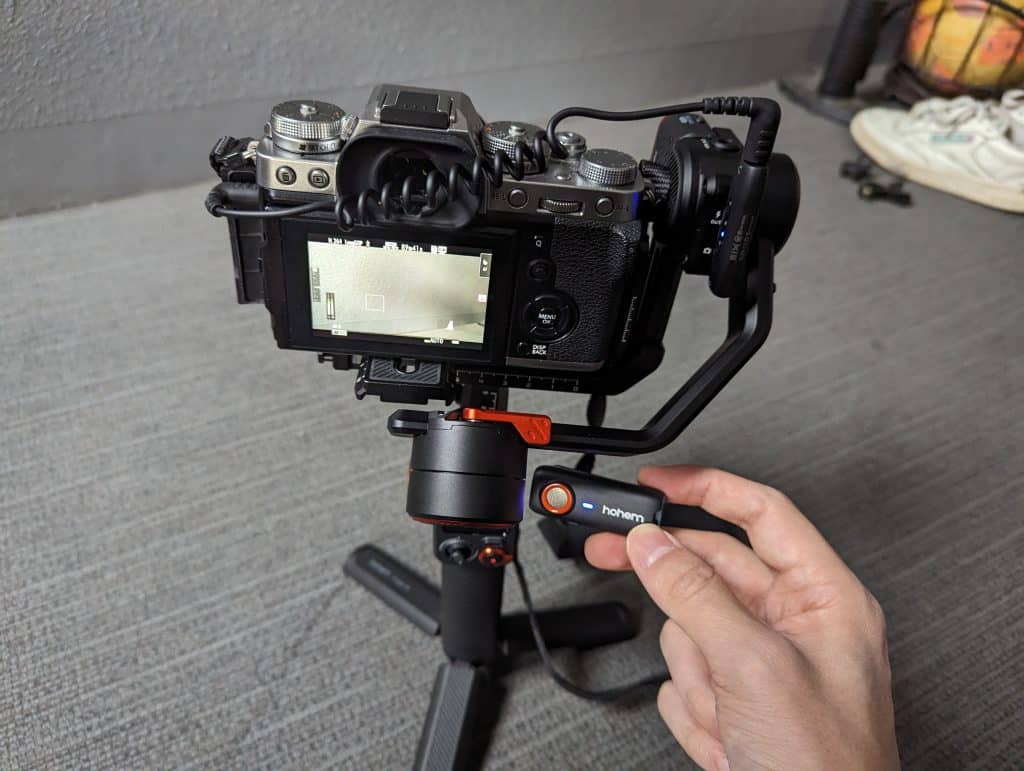
This does mean it isn’t the most streamlined setup when used with mirrorless cams or camcorders, but it’s an understandable trade-off that’s shared by most rival systems since an internal battery would only make the receiver more bulky.
Transmitters (TX)
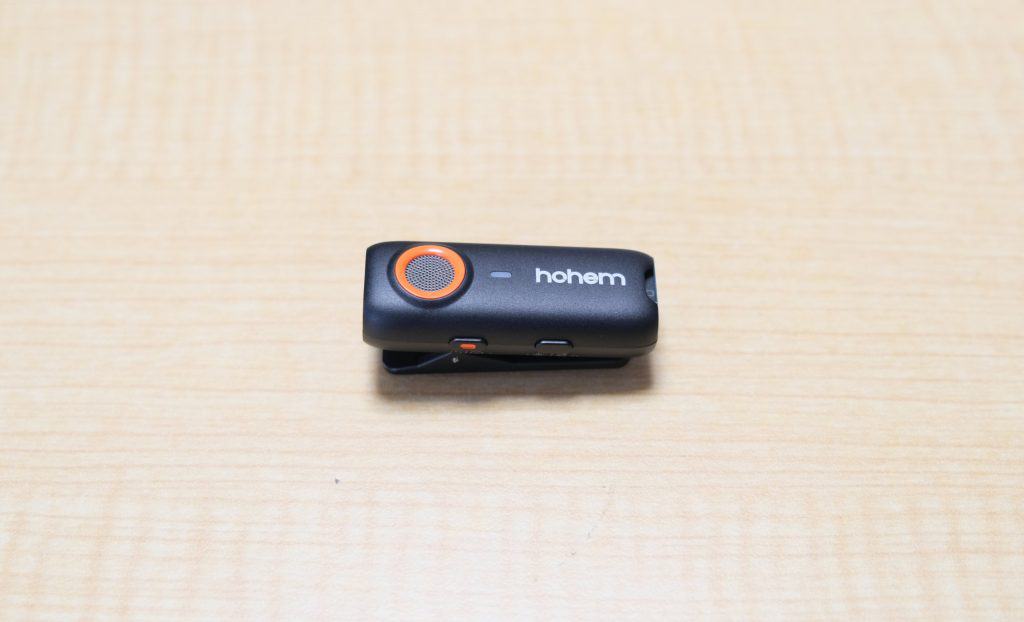
The two transmitters feature a consistent design with intuitively placed buttons and ports. Each transmitter has a built-in rechargeable lithium battery touting 7.5 hours of life, which as mentioned can stretch up to 20 hours when topped off from the charging case throughout a shoot.
The top side houses a 3.5mm port for plugging in external lapel mics, should you wish to bypass the built-in mic and use it just as a transmitter. Meanwhile, a USB-C port located at the bottom is there for direct charging but also enables direct audio file transfers by connecting to PCs and Macs (if you have fed it a TF/microSD card).
Besides the tried-and-true belt clip, an innovative clip magnet on each transmitter allows them to be mounted onto various metal surfaces, giving you much more placement flexibility. The Hollyland Lark Max, DJI Mic, and Rode Wireless GO offer this option, but it’s not common.
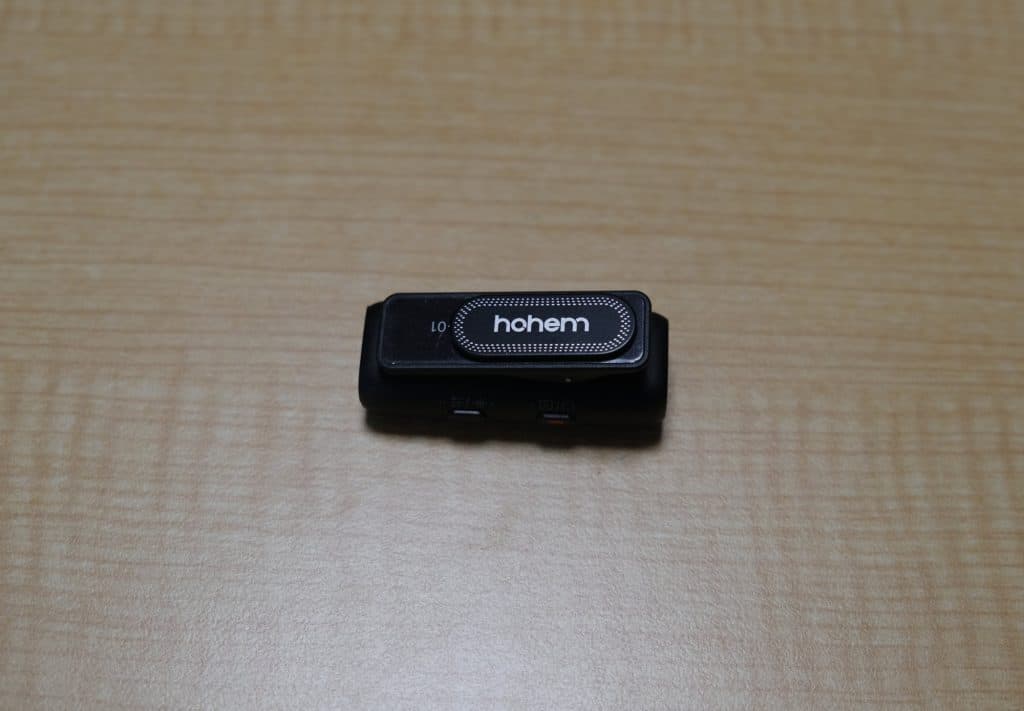
The microSD/TF card slot at the bottom of each transmit allows you to insert up to a 32GB memory card. This will back up all audio recordings, and also allows each transmitter to function as a standalone voice recorder when it is not paired to a receiver. The 32GB limit is higher than the 8GB internal memory of the DJI Mic or Hollyland Lark Max, although you do have to purchase the microSD card separately.
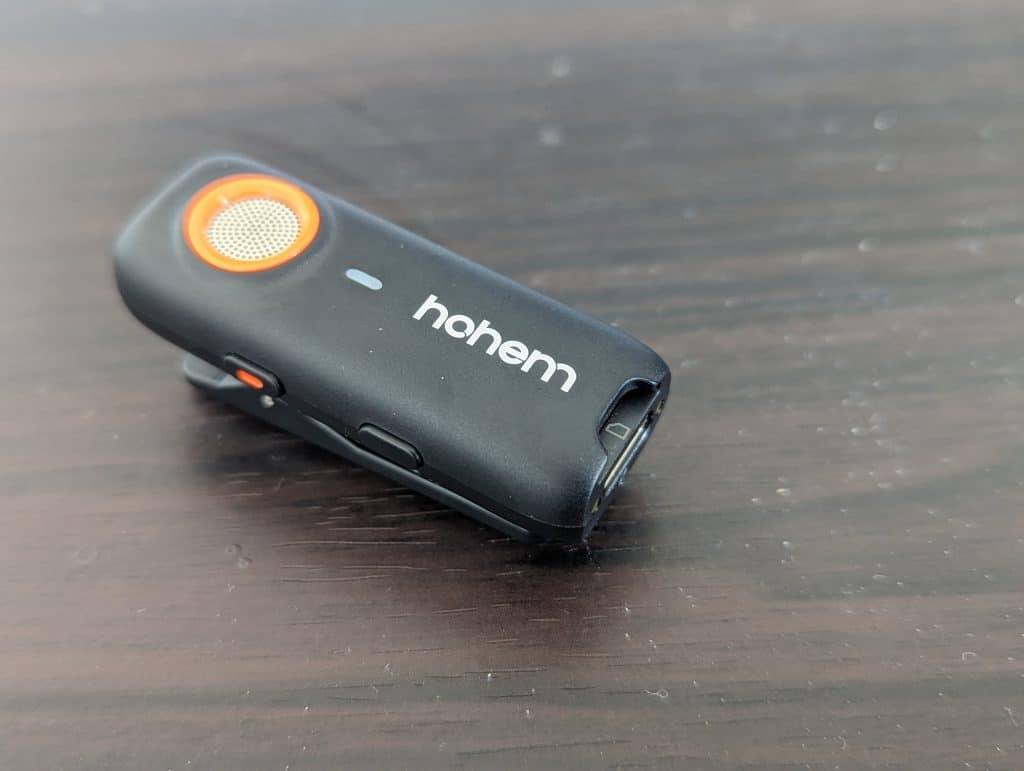
While it’s not currently possible to monitor the remaining battery level of each transmitter, the transmitters do at least give you a heads-up when the battery falls below 10% with a blinking red status light. However, some of the Mic-01’s more expensive competitors feature a receiver with a dedicated display that indicates the battery levels, while the likes of the Hollyland Lark C1 let you view them on its companion app.
Usage and Modes
Pairing Process
Setting up the Hohem Mic-01 is simple and works similarly to most comparable microphone systems.
First things first, you need to make sure the receiver (RX) is connected to your recording device. The RX is ready for pairing, with the CH1 and CH2 indicator lights blinking blue.
When I power on both transmitters (TX), the RX’s indicator lights for Channel 1 and Channel 2 will change from blinking to glowing steadily, letting me know they’re successfully paired. Of course, if I only pair one microphone, only the paired channel will have a steady light. It’s also easy to add a second microphone mid-usage, by pressing the RX’s “+” or “-” button to re-enter pairing mode for the respective CH1/CH2 channel.
A pretty neat feature is that the RX indicators match the mode indicators on each TX. This means even if the transmitters are out of reach, I still have a way to know each transmitter’s noise cancellation level and whether or not reverb mode is active.
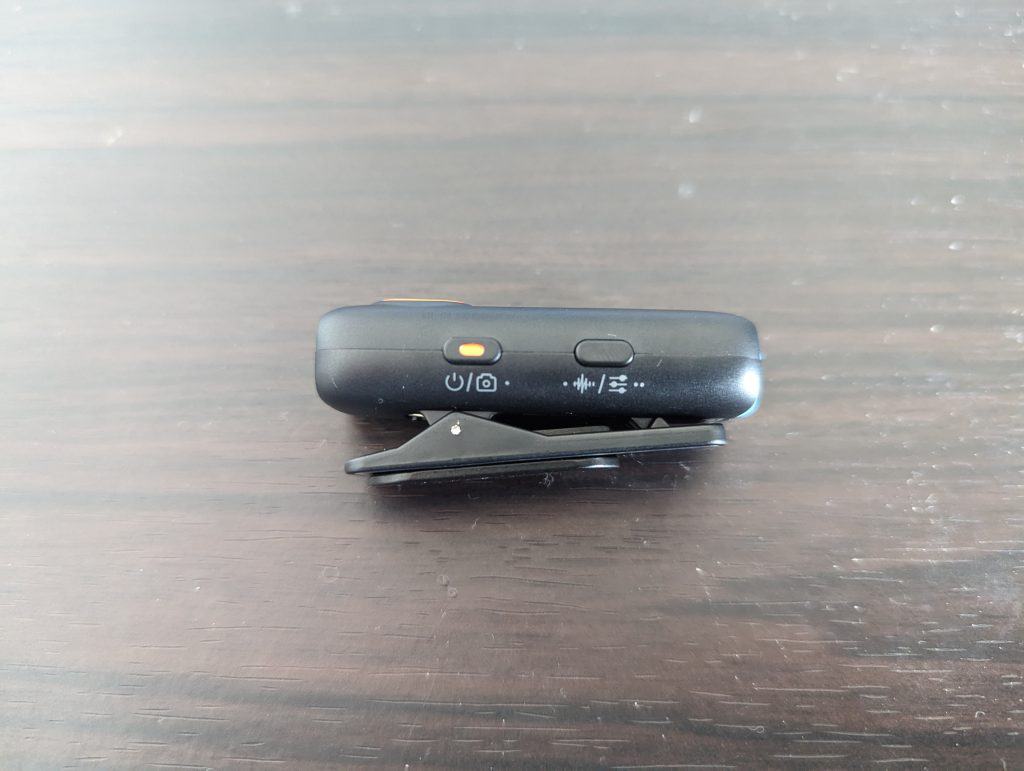
Remote Shutter Button
A feature I really like that many other similar microphone systems lack is the remote shutter button. This means even if you’re far away from your phone, you can take a photo or start recording your video. It’s much better than using a timer or voice controls.
Noise Cancellation
The Mic-01’s noise cancellation is pretty flexible. With a quick press of the Mode Button, I can toggle between the modes – off, standard, and strong, each indicated by a blue, green, or yellow light, respectively.
A nice feature is that each transmitter remembers the last noise cancellation setting in use before being turned off. That means during recording sessions where the microphones are frequently turned on and off but the environment remains relatively unchanged, I don’t have to keep manually setting the noise cancellation level every time.
Reverb Mode
A cool and somewhat niche feature on the Hohem Mic-01 is the Reverb effect. You can activate it by double tapping the Mode Button (instead of single tapping which adjusts the noise cancellation level).
What the Reverb does is add this cool echo effect to the audio, making it sound like I’m in a large, empty room. It’s perfect for when I want to add a bit of flair to my recordings.
Note that you can achieve this effect in post-processing, but this is a more convenient way of doing so and also makes it possible in certain other situations like live streams or phone calls.
Knowing if I’m in Reverb mode is super easy. The status light starts flashing, alternating between a distinctive purple color for Reverb and the current noise cancellation level’s color (blue, green, or yellow).
Gain Control
Adjusting the gain is straightforward too. A double press on the RX’s “-” (for channel 1) or “+” (for channel 2) button puts me into Gain mode for the channel I’m using.
I can then increase or decrease the gain with the “-” or “+” buttons, and the indicator turns red to show that I’m in control. There are a total of 5 gain levels. It defaults to a mid-level gain on first use, and just like with noise cancellation, it recalls my last setting when I power down.
What’s nice is that all these controls are right there on the device – no need to dive into menus or a separate app. The buttons are also inactive outside of Gain mode, so there’s little chance of accidental adjustments.
Wireless Range
When testing receiver range under various indoor and outdoor settings, I had no problems achieving line-of-sight transmission distances between 50 to 80 feet. The user manual specifications claim a maximum range of 150m/488 feet, but I haven’t tested at these limits.
Just note that like all of these wireless mics, range takes a significant hit indoors where there are walls. Also, like virtually all consumer wireless mics that operate on the unregulated 2.4GHz frequency band, you can encounter transmission issues if the band is heavily congested with other devices using the frequency. This is why it’s great that Hohem offers backup recording in the Mic-01, unlike the vast majority of other smartphone-focused wireless microphone systems.
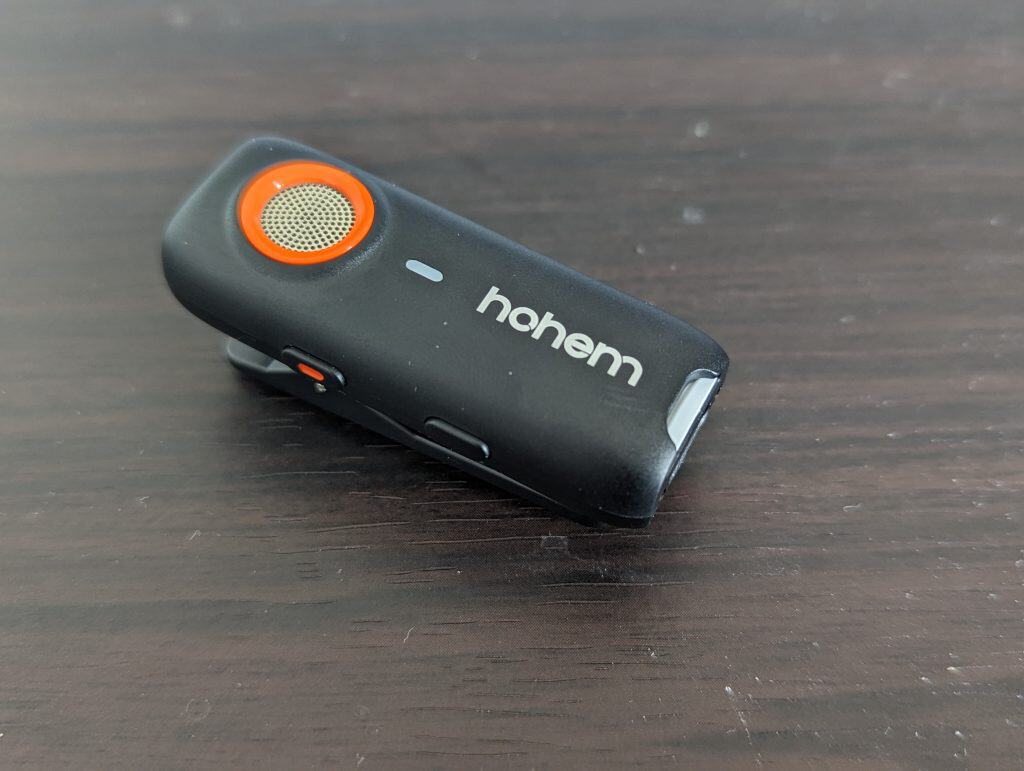
Audio Performance
The built-in microphones on the MIC-01 transmitters produced clear voice recordings, with a noise floor remaining low enough for clean recordings even at moderate volume levels. The mics have a sample rate of 48kHz and a bit depth of 16.
I compared results with the Godox WEC and DJI Mic 2 (from the DJI Osmo Pocket 3 Creator Combo) and it was a toss up between the Hohem and DJI, with the Godox mic picking up a bit more noise.
The noise cancellation modes are also quite effective at filtering out noise in particularly noisy environments, but even with it off the microphone won’t pick up much.
Conclusion
Overall I think Hohem has a winner on their hands with the MIC-01, because they’ve produced a high-quality wireless microphone system with a direct connection to phones.
There are a lot of these on the market, but when you inspect the situation more carefully, buyers are actually quite limited. You’ve got the sea of no-brand, under $50 options which suffer from poor audio quality, and then the very popular Hollyland Lark C1. But importantly the Lark C1 lacks backup recording, and misses out on other features like the clip magnet and reverb mode.
The Hohem Mic-01 bridges the gap between these plug-and-play type wireless phone mics and more serious wireless mic systems where you have to deal with clunky adapters in order to connect to your device.
The question is, what about those hybrid vloggers and creators that also record with a camera? Well, I personally think the Hohem Mic-01 as your microphone system for phone recordings and a different microphone system for your camera is close to ideal. However, if you really want an one-size-fits-all solution, the DJI Mic is probably your best bet, because of the clever modular adapter approach it takes.
9/10

